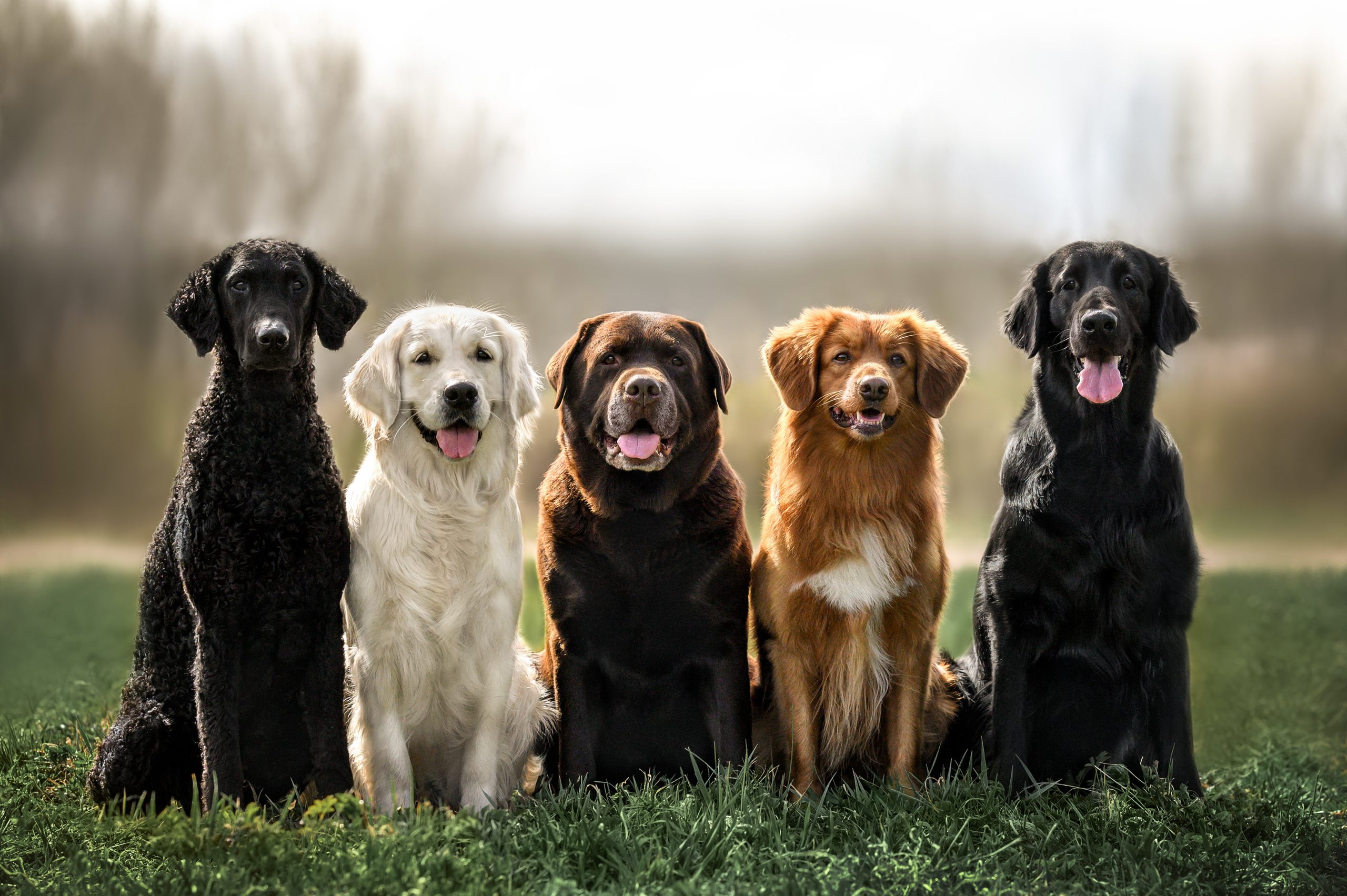Curious Canines: Interesting Facts About Dogs

Dogs have long held a special place in our hearts, earning the title of “man’s best friend” with their unwavering loyalty, affection, and companionship. Whether they’re racing to greet you at the door, offering a comforting nuzzle, or simply being by your side, dogs provide a sense of joy and stability in our lives. But our beloved furry friends are more than just pets; they’re complex beings with intriguing behaviors, communication styles, and histories.
Understanding more about these endearing creatures can deepen our bond with them and enhance their well-being. In this blog post, we’ll delve into some captivating facts about dogs that highlight their intelligence, unique traits, and surprising talents. From their ancient origins and evolutionary journey to their remarkable abilities and emotional depth, there’s so much to discover about our canine companions. So, let’s embark on this fascinating exploration of the wonderful world of dogs!
1. History and Evolution
The origin of domesticated dogs can be traced back to their ancestors, the gray wolves, around 15,000 to 40,000 years ago. Early humans and wolves formed a mutually beneficial relationship; humans provided food scraps, and in return, wolves offered protection and assistance in hunting. Over time, this symbiotic relationship led to the domestication of wolves into dogs.
As humans settled in different regions, they began selectively breeding dogs to enhance specific traits, resulting in the diverse array of breeds we see today. Each breed was developed with particular skills in mind, such as herding, hunting, or companionship, which is why different breeds exhibit distinct behaviors and physical characteristics. Famous historical dogs have left an indelible mark on human history as well.
For instance, Balto, the Siberian Husky, famously delivered life-saving medicine to the people of Nome, Alaska, during a diphtheria outbreak in 1925. Meanwhile, Laika, the Soviet space dog, became the first animal to orbit Earth, showcasing the courage and companionship dogs have provided throughout the ages.
2. Intelligence and Behavior
Dogs are renowned for their intelligence, which can vary significantly across different breeds. Intelligence in dogs can be broadly categorized into three types: instinctive, adaptive, and working intelligence. Instinctive intelligence refers to a dog’s natural aptitude for tasks it was bred for, such as herding or hunting. Adaptive intelligence is a dog’s ability to solve problems and learn from its environment and experiences. Lastly, working intelligence involves a dog’s capability to follow commands and learn from humans. Understanding these facets can help owners appreciate their pets’ cognitive abilities and tailor their training methods accordingly.
Common behaviors in dogs often have specific meanings, ranging from a wagging tail indicating excitement or happiness to a tucked tail suggesting fear or submission. It’s essential to observe these behaviors in context to accurately interpret what your dog is trying to communicate. Additionally, breed-specific behaviors can offer insights into a dog’s unique traits. For example, Border Collies are known for their exceptional herding skills and high energy levels, making them highly trainable and attentive. In contrast, Greyhounds possess a natural inclination for speed and agility, making them outstanding racing dogs but also gentle and laid-back companions at home.
Understanding these behaviors and intelligence levels can greatly enhance the bond between you and your dog, ensuring a more harmonious and fulfilling relationship.
3. Communication and Emotions
Dogs have an intricate system of communication that they use to interact with both humans and other dogs. They rely on a combination of vocalizations, body postures, and facial expressions to convey their feelings and intentions. Barking, growling, whining, and howling are some of the ways dogs vocalize, each serving different communicative purposes.
Body language also plays a crucial role; a wagging tail, raised ears, or a relaxed body posture typically indicate a happy and friendly demeanor. Conversely, a stiff body, bared teeth, or a lowered head can signal aggression or fear. Recognizing signs of canine emotions is vital for understanding your dog’s needs.
For instance, a dog showing signs of anxiety might yawn excessively, lick its lips, or avoid eye contact. By closely observing your dog’s body language, you can interpret their emotions more accurately and respond appropriately. This not only helps in building a stronger bond with your canine companion but also ensures their emotional well-being.
4. Health and Longevity
Maintaining your dog’s health and longevity involves understanding key factors that influence their well-being, being aware of common health issues, and adopting preventive measures. Nutrition plays a crucial role; feeding your dog a balanced diet rich in essential vitamins, minerals, and proteins can significantly impact their overall health.
Regular exercise is equally important, as it helps maintain an optimal weight, strengthens muscles, and prevents conditions such as obesity. Common health issues in dogs include dental disease, arthritis, and skin conditions, which can often be prevented or mitigated through routine veterinary check-ups, proper dental care, and a healthy diet.
Vaccinations and parasite control are also essential preventive measures to protect against diseases like rabies, distemper, and Lyme disease. To keep your dog healthy and happy, provide them with mental stimulation through interactive toys and training exercises, ensure they have regular social interactions, and create a safe and loving home environment. By taking these steps, you can enhance your dog’s quality of life and ensure they thrive throughout their years.
5. Fun and Unusual Facts
Dogs are full of surprises and have left remarkable footprints in human history. For starters, record-breaking dogs have consistently amazed us; for example, a Great Dane named Zeus holds the Guinness World Record for the tallest dog, standing at an incredible 44 inches tall. In popular culture, dogs have become iconic symbols; Lassie, the Rough Collie, and Rin Tin Tin, the German Shepherd, have graced our screens, capturing hearts with their heroic adventures and loyalty.
Beyond fame and size, many dogs possess surprising talents and abilities. Border Collies are often cited as the smartest of all dog breeds, excelling at understanding complex commands and learning new tricks.
Meanwhile, some dogs have exhibited extraordinary abilities, like the Labrador Retriever named Endal, who could perform over 100 tasks for his disabled owner, including operating switches and retrieving items from store shelves. These fun and unusual facts underscore the incredible diversity and capabilities of our canine companions, making them even more endearing and fascinating.
Conclusion
In wrapping up our exploration of “Curious Canines: Interesting Facts About Dogs,” it’s clear that our furry friends have much more to offer than just companionship. We’ve delved into the rich history of dogs, their remarkable intelligence and behaviors, nuanced communication methods, essential health and longevity tips, and some truly fascinating fun facts. Whether it’s Zeus, the tallest dog, or the talented Endal, dogs continue to captivate and amaze us in countless ways.
As dog owners and enthusiasts, appreciating these aspects can deepen our bond with our pets and enhance our understanding. So, take some time to observe, interact, and explore more about your dog’s unique traits and quirks. The journey of getting to know your canine companion is both rewarding and enriching.
We encourage you to share your own stories and experiences with dogs. Whether it’s an amusing anecdote, a heartfelt tale of loyalty, or tips on training and care, your contributions can inspire and inform the wider dog-loving community. Post your comments and stories below – let’s celebrate the incredible world of dogs together!
References
List of Scientific Studies, Books, and Articles Referenced
- The Intelligence of Dogs by Stanley Coren
- This book provides a comprehensive look into the intelligence levels of various dog breeds, exploring how they learn and solve problems.
- Dogs: Their Fossil Relatives and Evolutionary History by Xiaoming Wang and Richard H. Tedford
- A thorough exploration of the evolutionary history of dogs, offering insights into how they became man’s best friend.
- Development and Validation of a Canine Symptom Assessment Scale for Individuals With Anxiety (Journal of Veterinary Behavior)
- This study delves into how dogs’ behaviors can be indicative of anxiety and other emotional states.
- Canine Communication: Insights From Observing Everyday Interactions (Applied Animal Behaviour Science)
- An insightful article focusing on how dogs communicate through body language and vocalizations.
- The Welfare of Dogs edited by Kevin Stafford
- Examines various aspects of canine welfare, from health and nutrition to social interactions and mental stimulation.
- Dogs Decoded: The Science Behind Your Dog’s Behavior (National Geographic documentary)
- A fascinating documentary that covers the science of dog behavior, including their unique communication skills and emotional intelligence.
- Selecting and Training Dogs for Your Lifestyle by Ian Dunbar
- A practical guide on how to choose and train dogs based on their specific traits and your lifestyle requirements.
- A Dog’s Journey: Understanding the Canine-Companion Bond (Journal of Applied Animal Welfare Science)
- Investigates the emotional bond between dogs and their owners, highlighting the mutual benefits and responsibilities.
Further Reading Suggestions for Dog Lovers
- Inside of a Dog: What Dogs See, Smell, and Know by Alexandra Horowitz
- Explores the world from a dog’s perspective, offering a deep dive into their sensory experiences and cognitive world.
- The Other End of the Leash: Why We Do What We Do Around Dogs by Patricia B. McConnell
- Discusses human-dog interactions and how our own behaviors impact our canine companions.
- Dog Sense: How the New Science of Dog Behavior Can Make You a Better Friend to Your Pet by John Bradshaw
- Provides insights on modern scientific understanding of dog behavior, helping improve the human-dog relationship.
- How to Speak Dog: A Guide to Decoding Dog Language by Aline Alexander Newman and Gary Weitzman
- A handy guide on understanding and interpreting your dog’s body language and vocalizations.
- Pukka’s Promise: The Quest for Longer-Lived Dogs by Ted Kerasote
- Investigates the factors that contribute to the longevity and health of dogs, offering practical tips for owners.
- The Secret Language of Dogs: Unlocking the Canine Mind for a Happier Pet by Victoria Stilwell
- Focuses on better communication with dogs to foster a happier and more fulfilling relationship.
These references and further readings provide a wealth of information for anyone interested in the fascinating world of dogs. Whether you’re looking to deepen your understanding, improve your dog’s well-being, or simply enjoy heartwarming stories, these resources are invaluable.




